To many immigrant families, fusion cuisine is not a restaurant trend, it’s what’s served at home. Immigrants bring food tastes and memories from their old home country and combine them with available ingredients in their new home country. Sometimes they create faithful reproductions of traditional cuisine, but sometimes – as in the case of my mom’s barbecue chicken – they come up with something new, different and wonderful.
Chinese and barbecue aren’t two words one normally thinks of in the same sentence. But my mom loves barbecue, and why not? Like people around the world, Asians also love the taste of meat cooked by an open flame. There’s the garlicky sweet-soy of Korean barbecue, the freshness of shallots and lemongrass in Vietnamese grilled meats, the sweet-sour heat of Thai barbecue, the skewers of Indonesian satay with their spicy peanut sauce.
My mom has experimented with all kinds of marinade ingredients over the years, and one that she always comes back to is flavored with hoisin sauce – the dark, thick, salty-sweet sauce that most Americans know primarily through Peking duck or mu shu pork. Mom starts with a ketchup base, adds hoisin sauce plus a bit of vinegar, sugar, mustard and garlic, and marinates the chicken overnight. My dad hovers over his grill with great care, basting each piece of chicken in the sauce every time he turns it. The result is tangy, juicy, slightly-charred perfection.
If you’re looking for something new to try for Labor Day weekend, this is a great twist on familiar flavors. And don’t worry if you get hooked during this unofficial last weekend of summer – the recipe works in the broiler for cold-weather cooking too.
I was going to post this recipe in the summertime, but the few pictures I took in California didn’t do it justice. So now I’m back in Ohio, where I have no grill. No grill! I’m a poor excuse for a Californian. No matter – you guys know how to grill. I’ll demonstrate the broiler method for fall and winter cooking.
My mom likes chicken wings best, and not the more accessible mini-drumstick side, either. From an American point of view, wings can be challenging to eat – too much bone, too much trouble. But from a Chinese point of view, the wing has much more surface area to soak in the marinade, meat cooked on the bone has better flavor, and a longer the meal takes, the better. In a busy workday, meals are seen as a sanctioned time to sit, nourish one’s health with good food, and enjoy the company of loved ones. Chinese diners relish food that also serves as activity – whole fish, cracked crab, peanuts with shells.
With four kids and a non-Chinese husband, however, I fall into the convenience category these days. I’m using boneless, skinless chicken breast because it’s what I have handy.
Let’s start with the sauce, so you can see how easy it is. Ketchup, hoisin sauce and garlic are the key ingredients. Hoisin sauce is fairly common these days in the Asian section of regular supermarkets. But if you can make it to an Asian market, the Koon Chun brand is darker, thicker and more strongly flavored than what you’d normally find at the supermarket. For the gluten-free, I’ve read that Wok Mei brand is also very good.
Start with the ketchup and hoisin sauce. I was going to add everything at once, but I wanted to show you what the hoisin sauce looks like.
Add a bit of brown sugar, vinegar and mustard.
Plus some minced garlic (I just push it through garlic press for expediency) and a bit of crushed red pepper. The pepper just adds some interest, no real heat. But feel free to up the red pepper if you want real spice.
When my mom uses chicken breast, she cuts it at a shallow diagonal to increase the surface area of each piece. The math teacher in her knows how to maximize surface area, and the cook in her knows how to boost flavor absorption.
I used to use ziplock bags to marinate – still the handiest method – but these days I try to limit my use of disposable plastic. So I put my chicken in a shallow baking dish.
Add enough sauce to coat the chicken and reserve the rest. I should have reserved some of the sauce for basting later – this is more than I really needed. Marinate a few hours or overnight.
I thought I was cooking this same day, but it ended up being two days later.
Broil until browned. I like a little char.
Baste with extra sauce. I accidentally put all my sauce in the chicken, so I’m basting with the marinating sauce. Of course for food safety I wouldn’t do this if I weren’t cooking the chicken again.
And the chicken goes back under the broiler for the second side.
Watch carefully – the second side cooks more quickly than the first.
All done. And I didn’t even set off the smoke alarm.
My mom often serves hers with steamed rice, stir-fried string beans and a salad. But you could just as well serve it with cornbread and greens. Here I have quinoa and a big salad.
Other dishes that would be great for a Labor Day cookout:
- Greek salad
- Quinoa arugula salad
- Lighter, brighter Caesar salad
- Mascarpone cream cake with boozy berries
- Strawberry shortcakes with maple vanilla cream
- Blueberry sour cream pie
- Blackberry cobbler
Have a delicious Labor Day weekend!
Mom’s Barbecue Chicken
Over many long California summers, my mom has perfected her tangy chicken marinade with a Chinese twist, and my dad has perfected his grilling technique. No matter how often we have it, barbecue dinner at their house is a huge treat each and every time.
Ingredients
- 2 1/2 lbs boneless skinless chicken thighs (wings work well too)
- 1/2 cup ketchup
- 1/2 cup hoisin sauce
- 1 tablespoon soy sauce
- 1 tablespoon white vinegar
- 1 tablespoon brown sugar
- 2 cloves garlic, roughly chopped
- Crushed red pepper (optional)
Directions
- Rinse and pat dry chicken (moisture will make the marinade watery). Cut each thigh into 2-3 pieces, trimming any pockets of fat.
- Mix sauce ingredients together in a bowl.
- Add chicken to the sauce a few pieces at a time, and turn pieces to coat each one well. Remove well-coated chicken pieces to a container (a baking dish or ziploc bag work well). Let marinate in refrigerator for a few hours or overnight.
- Chicken is best grilled (heat to 250-300 degrees F), but you can use a broiler as well. If using broiler, cook 8-10 minutes on first side. Watch carefully, as the broiler can go from cooked to burnt very quickly. Cook until chicken is browned and starting to char at edges. Second side will cook more quickly than the first. Let rest for a few minutes and test for doneness before serving.
Serves 6-8.
Notes
- Hoisin sauce is fairly common these days in the Asian section of regular supermarkets. But if you can make it to an Asian market, the Koon Chun brand is darker, thicker and more strongly flavored than what you’d normally find at the supermarket. For the gluten-free, I’ve read that Wok Mei brand is also very good.
- Feel free to substitute white sugar for brown, or another vinegar for white. These are in such small amounts the substitutions won’t make a big difference.
- You can omit the crushed red pepper, but a sprinkling gives a bit of interest to the sauce without any real heat. Feel free to use more if you want a real kick.
- In the past my mom has sometimes added a small squirt (1 teaspoon) of mustard to the mix.
Here’s the link to a printable version.

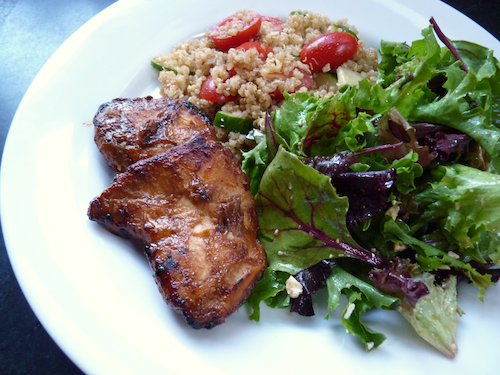

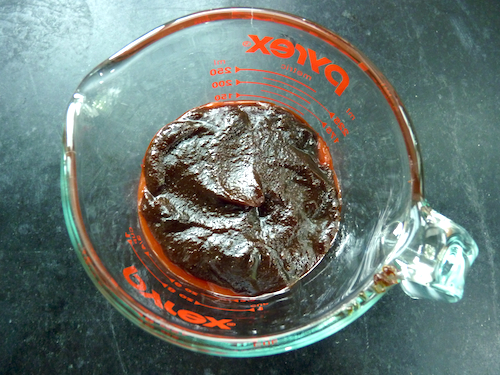
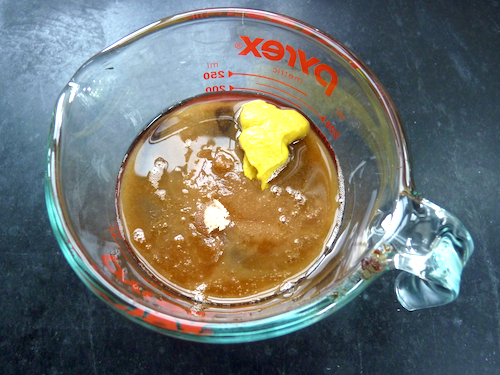
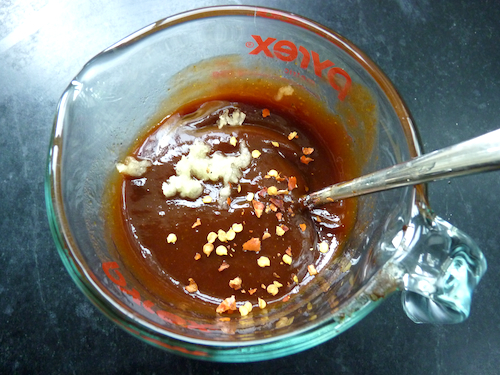
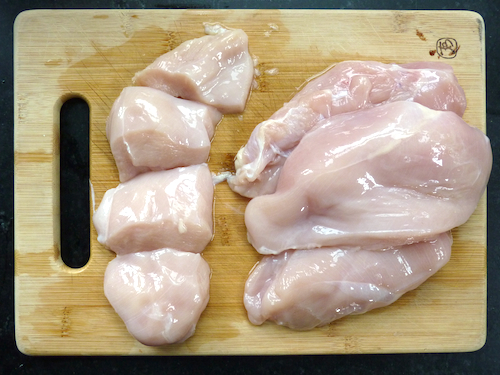
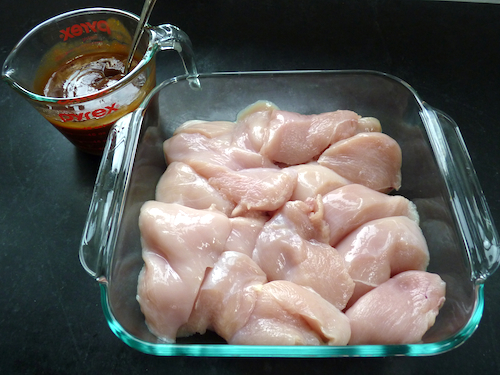
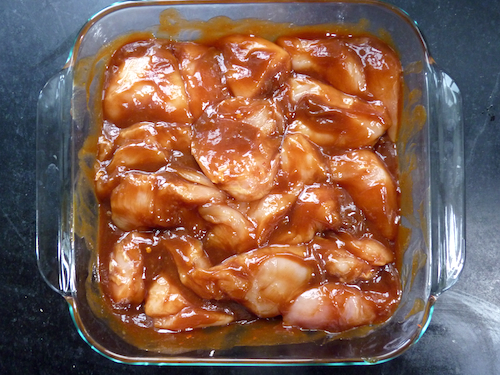
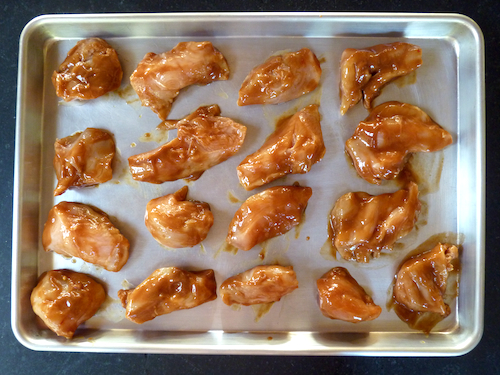

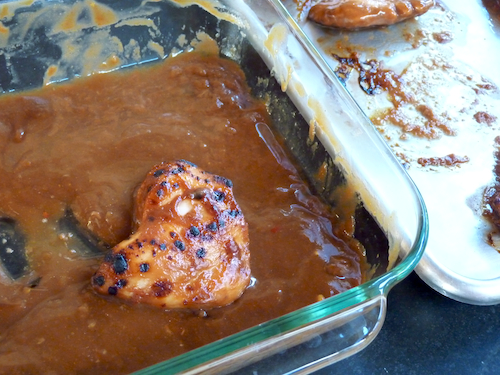
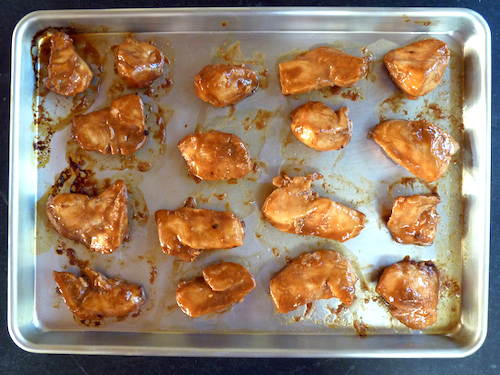
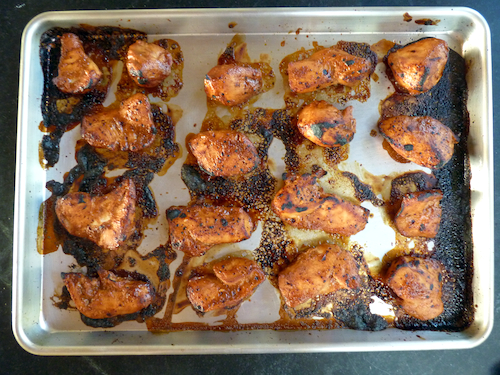
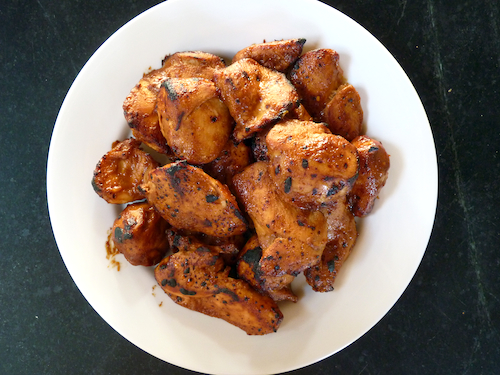
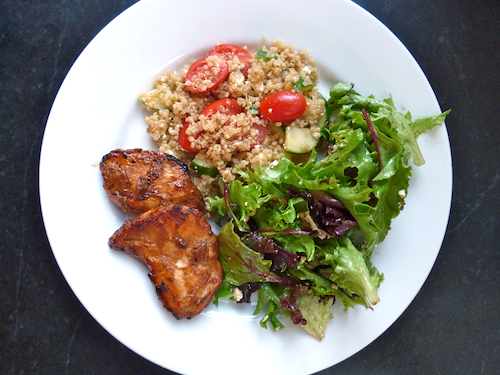




Looks delicious! Thanks for the recipe.